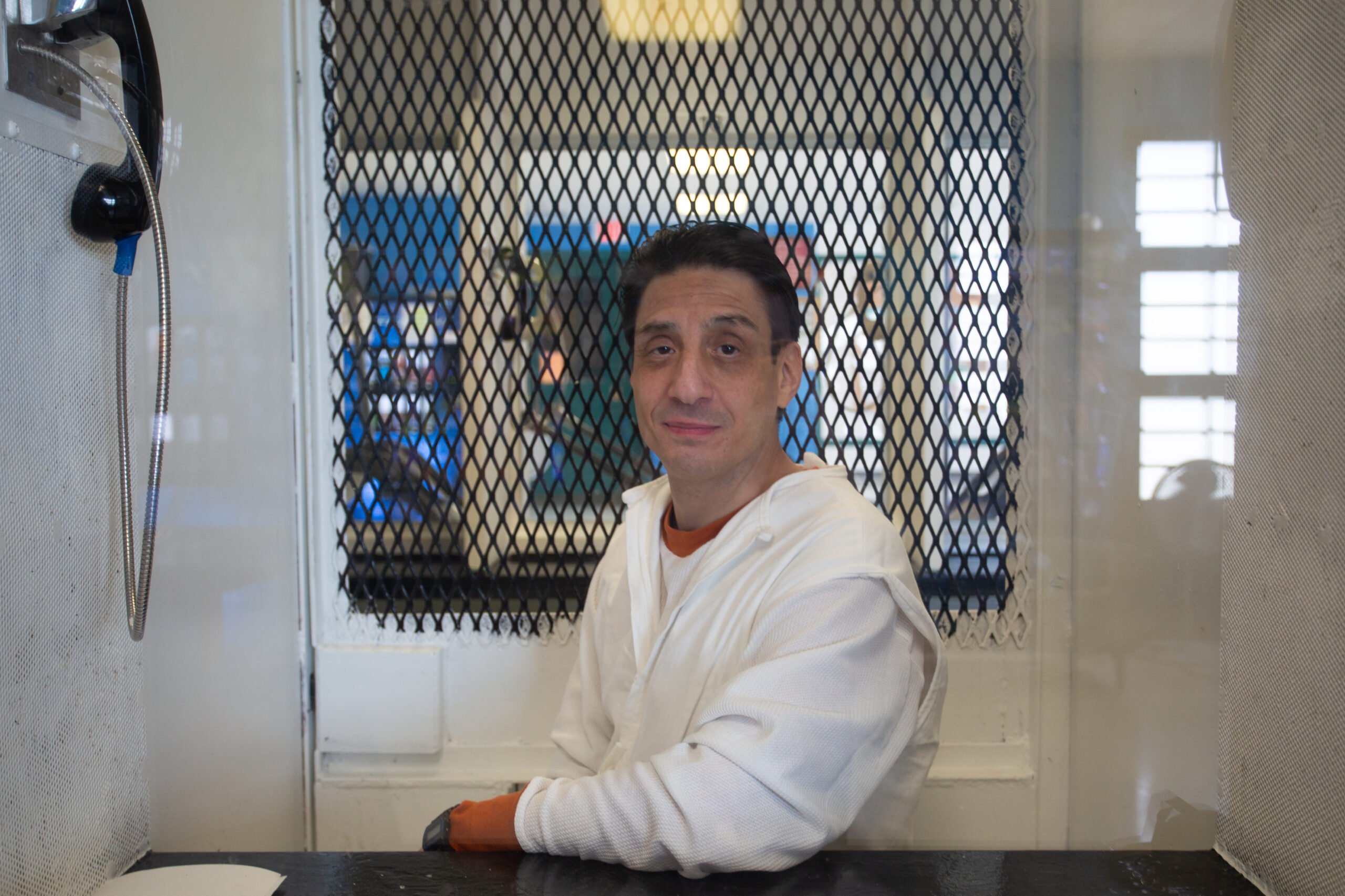
‘It’s the South’: Harris County Sends 15 Times More Black Men to Death Row than White
Texas’ largest county remains the state’s deadliest when it comes to capital murder convictions, a new report says.

Of the 21 people from Harris County most recently sentenced to death, all but one was a person of color, according to a report released today by the nonprofit Texas Defender Service (TDS).
The report found that 15 death sentences were handed down to Black men since December 2004—three of which have since been overturned. Four were given to Hispanic men, one to Ali Irsan, a Jordanian immigrant, and only one to a white man.
The county’s imposition of the death penalty in the 21st century is dubbed both “arbitrary and capricious”, with staggering racial disparities in sentence severity, in a report by TDS, a nonprofit legal and advocacy group dedicated to stemming the flow of “mass incarceration and excessive punishment.”
TDS released the report on the anniversary of the 2017 U.S. Supreme Court decision that overturned the death penalty for Duane Buck, a Black Harris County man who was condemned to die after jurors heard racist testimony.
Texas’ largest county also remains the state’s deadliest when it comes to capital convictions. A quarter of all Texans sent to death row since 1973 came from Harris County, the report found. If the county were a state, it would rank only behind Texas in terms of funneling people onto death row.
Since the death penalty was reinstated here in 1976, nearly three-quarters of the people Harris County courts sent to death row were persons of color—and more than half were Black. Today, nearly 44 percent percent of Harris County residents are Hispanic, 27 percent are white and only 20 percent are Black, according to data from the U.S. Census Bureau.
The bulk of the past 21 death sentences, the report found, were imposed between 2004 and 2018. (The report looked only at standing newly imposed death sentences, not at defendants who were resentenced after appeals).
“As shown by our review of Harris County’s history and modern practices, racism continues to impact the criminal legal system in general—and the administration of the death penalty in particular—in Harris County. This is unacceptable,” the report states.
Former Harris County District Attorney Charles “Chuck” Rosenthal—who resigned in 2008 after a scandal that included revelations that he had sent and received racist and sexually explicit messages from his government email account—led the office from 2000 to 2008. (His predecessor, Johnny Holmes, was more than three times more likely to seek the death penalty against a Black defendant than “when a similarly situated defendant was white,” according to the report.)
Although Rosenthal kickstarted what the report’s authors call an “unprecedented spree of obtaining death sentences exclusively against people of color,” the two subsequent elected Republican DAs followed a similar pattern. Patricia Lykos and Devon Anderson oversaw cases that resulted in five death sentences, all involving nonwhite defendants.
Current Harris County District Attorney Kim Ogg, who ended a 40-year streak of Republican rule over the prosecutor’s office when she was elected in 2016, vowed to abandon the path her predecessors charted. Now in her second term, Ogg has overseen three new cases that resulted in death sentences; a fourth during her tenure was handled by a special prosecutor’s office. Of the three cases Ogg’s office directly handled, one was against Lucky Ward, a Black man, and another against Robert Solis, who is Hispanic. The third involved a white defendant, Ronald Haskell.
Two Black men convicted in Harris County in the 1980s and 1990s—Robert Jennings and Arthur Brown Jr.—have been executed during Ogg’s tenure.
A spokesperson from Ogg’s office declined to comment on the racial disparity over the past decades but said decisions about whether to pursue the death penalty in Harris County are made by the capital committee, a group of more than a dozen people from the prosecutor’s office that meets weekly to consider arguments from trial prosecutors and the defense attorneys before reaching a decision. Ogg still has final say over whether to pursue death.
While pursuing death in multiple cases, Ogg’s office also opened an investigation into the 2005 death sentence of Alfred Brown, a Black man whose conviction had been overturned in 2014. Her office found Brown was actually innocent in 2019.
In 2017, after the Supreme Court returned Duane Buck’s case to Harris County, Ogg opted not to pursue the death penalty against Buck.
Harris County prosecutors have sought the death penalty less often in recent years, but the disparities in death sentences remain stark, the report said.
“There’s still a lot to address, especially when it comes to the legacy of racial discrimination,” said Estelle Hebron-Jones, director of special projects for TDS.
Racism can affect a criminal case at every stage, from how and why a suspect is pursued by police to the verdict the jury foreperson delivers at the trial’s end. But the report suggests it seems to be a particular problem in Harris County’s jury selection process and in the evidence presented during sentencing hearings.
The report’s authors noted that the county has a history of “using peremptory strikes—strikes that a party’s counsel may make against a potential juror for virtually any reason—to systematically exclude Black individuals and other people of color from juries.” At least 13 death penalty defendants from the past 20 years have alleged in appeals that the state used these strikes “in a discriminatory fashion,” TDS found.
Duane Buck’s case is one of the most infamous Harris County cases involving racialized evidence and witness testimony. Buck had been sentenced to death by a Harris County jury in 1997 after shooting and killing his ex-girlfriend and her friend at her home, where her children saw the whole thing, in July 1995.
During the punishment phase, when the jury was deciding whether to opt for the death penalty or life in prison for the defendant, Buck’s own defense attorney called an expert witness to the stand to testify. The psychologist, Dr. Walter Quijano, testified in front of the jury that Buck was more likely to be violent in the future because he was Black. The jury, after requesting to see Quijano’s report, chose death.
For years, Buck tried unsuccessfully to appeal his case, arguing that his trial lawyers erred by allowing Quijano to testify.
The U.S. Supreme Court had weighed in, overturning the death sentence in another case in which Quijano testified that a Hispanic defendant was more likely to be violent because of his race. In the wake of that decision, Texas’ then-Attorney General John Cornyn led an audit that flagged other cases where Quijano had provided race-based dangerousness arguments as a prosecution witness. But the state didn’t grant Buck relief because it was his own lawyers—not the state’s—who had introduced the racialized testimony.
It wasn’t until 2017 that the U.S. Supreme Court weighed to say it didn’t matter which side introduced race into the equation or to what extent it was explored—once it was in the record, it had a corrosive effect regardless.
“When a jury hears expert testimony that expressly makes a defendant’s race directly pertinent on the question of life or death, the impact of that evidence cannot be measured simply by how much air time it received at trial or how many pages it occupies in the record,” wrote Chief Justice John Roberts in the opinion, delivered February 2017. “Some toxins can be deadly in small doses.”
Lee Kovarsky, a law professor at the University of Texas at Austin, said the Buck decision made big waves in Harris County. “It was a big deal atmospherically because it signaled that even minor references to race could be very problematic,” he told the Texas Observer.
The TDS report’s authors say there are critical changes needed in Harris County to avoid racial discrimination in the application of the death penalty moving forward, including judicial training, data collection and sharing by the DA’s office, and statewide legislation that empowers death row prisoners to challenge convictions they believe were influenced by racism.
Anthony Graves, who has lived in Harris County since his own exoneration from Texas’ death row in 2010, said Texas lawmakers are unlikely to budge unless pushed by changes to the national criminal justice discussion.
“Texas does not want to acknowledge the deep-seated racism that exists in our criminal justice system,” Graves told the Observer. “Texas has this opinion that these are isolated incidents, and we don’t operate in that way. But I was in the cheap seats for 18 and half years, and I can say that Texas is no different.”
When asked whether he was surprised that TDS found that such a large portion of recent death sentences were handed down to people of color, Graves said, “It’s the South. …I guess I’m surprised that all [of them] weren’t African American.”



